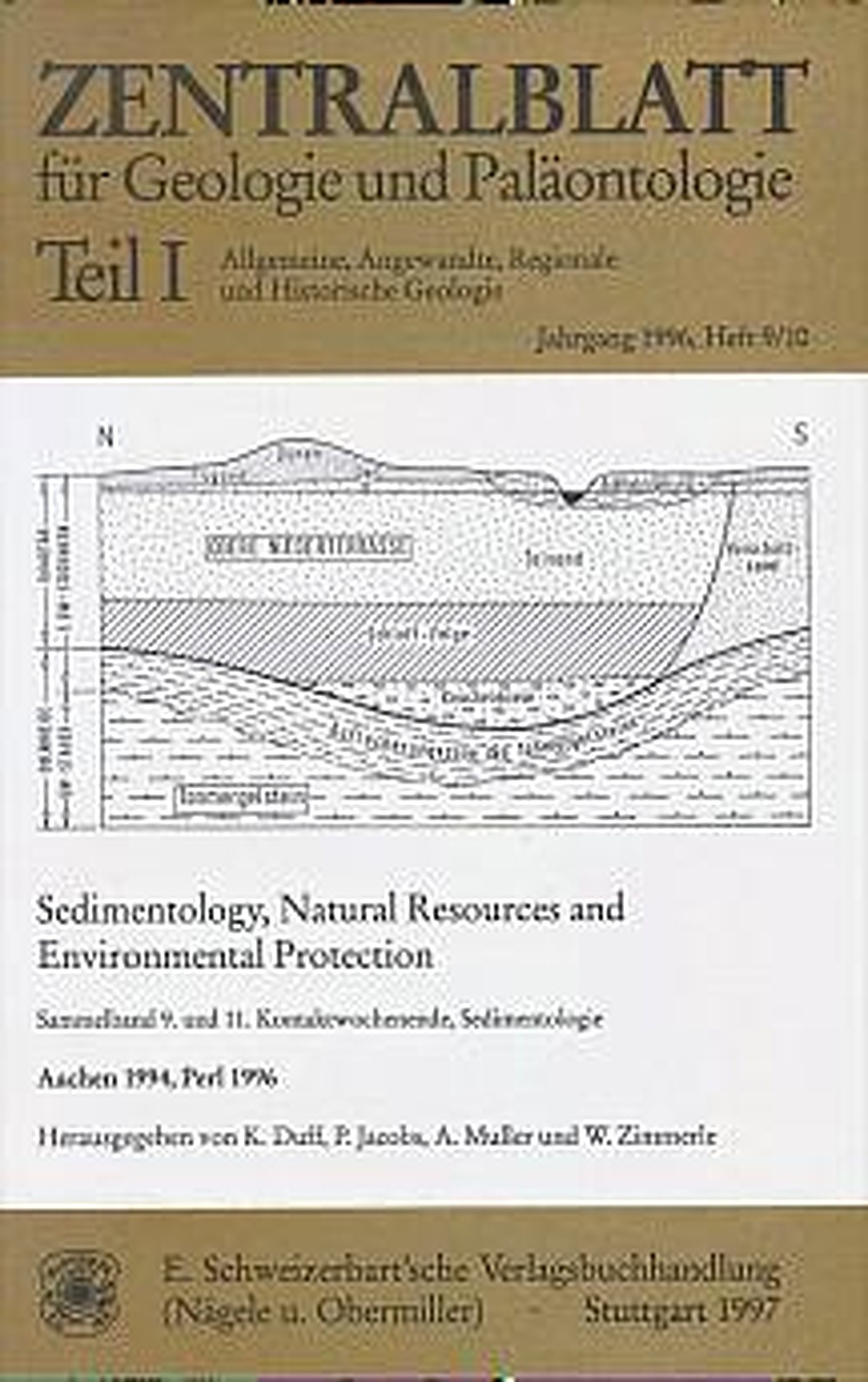Synopsis Haut de page ↑
This volume, entitled "Sedimentology, Natural Resources and
Environmental Protection", contains a summary of nine papers given at
the 9th "Kontaktwochenende Sedimentologie" held in Aachen in September
1994 and six papers given at the 11th "Kontaktwochenende" held in Perl
in September 1996. The "Kontaktwochenende" is an annual meeting of the
Aachen Sedimentology Group (Lehr- und Forschungsgebiet: Allgemeine und
Historische Geologie, Arbeitsrichtung: Geologie Sedimentärer Becken)
covering topics relating specifically to sedimentology, with each
meeting focusing on a particular theme. The current volume
concentrates on fundamental approaches to sedimentology, with special
emphasis on new approaches which find practical application, notably
with regard to natural resource identification and utilisation. In
addition, a part of the 9th meeting considered the ethical dimension
of natural resource utilisation, including a consideration of the
practicalities of environmental protection as it affects Earth
materials. This innovative approach fits well with the way that the
Aachen meetings have developed, with the intentation to address more
challenging and controversial issues.
The first part concentrates on fundamentals of sedimentology, and new
approaches which have been developed for a number of subject
areas. Zimmerle begins the volume with a review of where sedimentary
petrology has reached by 1994, drawing on his long experience of the
field. Draxler then describes new geophysical approaches which are
being used to acquire data from boreholes for the purposes of
formation evaluation. Spork and Köngeter simulate recent
depositional processes of fine sediments in rivers and water
reservoirs ("Haus Ley"), a topic of considerable importance to water
exploitation. Swennen et al. demonstrate the use of geochemical
mapping of overbank sediments in Belgium and Luxembourg to assess
present environmental pollution. In the Krauthausen case study
Neuendorf et al. simulate reactive solute transport in heterogeneous
aquifers in the subsurface. Hüssner et al. present a
three-dimensional simulation model (REPRO) for the growth and
spreading of reefs, based on a modified Fisher equation. Finally, Pape
applies the principles of fractal analysis to sedimentology in his
study entitled "Fractal geometry and fractal ''Music of the Earth''".
The following five papers deal under the heading "Natural Resources"
with aspects of applied sedimentology. Mehlmann, Koch et al. and
Köster refer to applied facies studies of carbonate rocks, including
processes of limestone exploitation and assessment. Elfers et
al. present the first hydrogeological map of North-Rhine-Westphalia, a
contribution to applied geological mapping in general. Werner et
al. evaluate the economic potential of Pleistocene sand and gravel
deposits in the southern Oberrheingraben.
The final section concentrates on environmental protection, and on
some ethical aspects of the Earth sciences. Duff explains the legal
protection given to important geological localities in Britain, and
describes some of the methods used to ensure that the sites remain
available for study and research. Jacobs et al. put these efforts in a
wider context, by describing the work being done towards the
development of a global philosophy and strategy for Earth Heritage
Conservation. Pajor takes his even wider in his paper on Earth studies
and theology, in which he reflects on the history and importance of
the ethical dimension.
